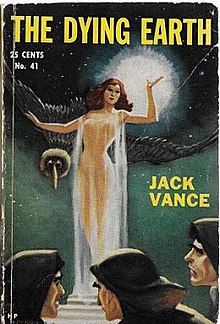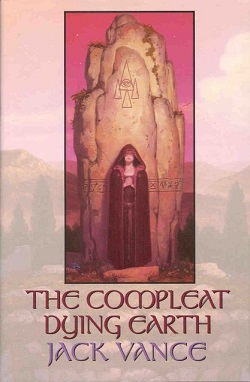
Dying Earth is a speculative fiction series by the American author Jack Vance, comprising four books originally published from 1950 to 1984. Some have been called picaresque. They vary from short story collections to a fix-up, perhaps all the way to novel.

The Excellent Prismatic Spray is a magazine devoted to the fantasy role-playing game Dying Earth and the author Jack Vance on whose works the game is based. The magazine is published intermittently by Pelgrane Press and is named for one of the spells used by various wizards in the Dying Earth stories.

John Holbrook Vance was an American mystery, fantasy, and science fiction writer. Though most of his work has been published under the name Jack Vance, he also wrote several mystery novels under pen names, including Ellery Queen.

The Magic Goes Away is a fantasy short story written by Larry Niven in 1976, and later expanded to a novella of the same name which was published in 1978. While these works were not the first in the "Magic Universe" or "Warlock" series, they marked a turning point after the 1973 oil crisis and Niven's subsequent transformation of the series into an allegory for a modern-day energy crisis. The setting was later used as a backdrop for the Golden Road series of novels The Burning City and Burning Tower, co-written with Jerry Pournelle, and the novel The Seascape Tattoo co-written with Steven Barnes.

Robin D. Laws is a Canadian writer and game designer who lives in Toronto, Canada. He is the author of a number of novels and role-playing games as well as an anthologist.
Magic systems in games are the rules, limitations, abilities, and characteristics that define magic in a game.
The wizard, formerly known as the magic-user or mage, is one of the standard character class in the Dungeons & Dragons fantasy role-playing game. A wizard uses arcane magic, and is considered less effective in melee combat than other classes.

The Eyes of the Overworld is a picaresque fantasy fix-up novel by American writer Jack Vance, published by Ace in 1966, the second book in the Dying Earth series that Vance inaugurated in 1950. Retitled Cugel the Clever in its Vance Integral Edition (2005), the story takes place in Vance's Dying Earth setting, where the Sun is dying and magic and technology coexist. It features the self-proclaimed Cugel the Clever in linked episodic stories. Cugel is an anti-hero character; while he is typically a crafty scoundrel who seeks to turn a profit from a situation, he retains some good values at times. In the novel, Cugel is caught stealing from a wizard, who forces Cugel to travel to a faraway realm to find a rare magical jewel.
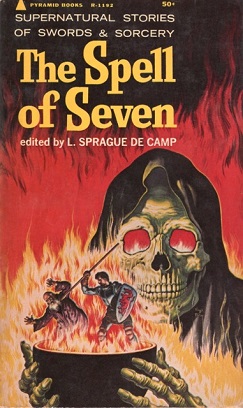
The Spell of Seven is an anthology of fantasy short stories in the sword and sorcery subgenre, edited by L. Sprague de Camp and illustrated by Virgil Finlay. It was first published in paperback by Pyramid Books in June 1965, and reprinted in December 1969. It was the second such anthology assembled by de Camp, following his Swords and Sorcery (1963).
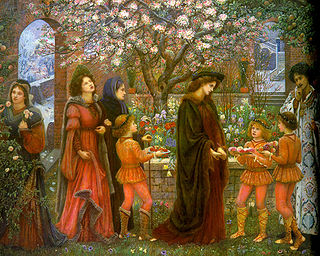
A magician, also known as an archimage, mage, magus, magic-user, spellcaster, enchanter/enchantress, sorcerer/sorceress, warlock, witch, or wizard, is someone who uses or practices magic derived from supernatural, occult, or arcane sources. Magicians enjoy a rich history in mythology, legends, fiction, and folklore, and are common figures in works of fantasy, such as fantasy literature and role-playing games.

Advanced d20 Magic is a sourcebook published by Guardians of Order in 2006 that contains variant rules for the third edition of the fantasy role-playing game Dungeons & Dragons.

Cugel's Saga is a picaresque fantasy novel by American writer Jack Vance, published by Timescape in 1983, the third book in the Dying Earth series, the first volume of which appeared in 1950. The narrative of Cugel's Saga continues from the point at which it left off at the end of The Eyes of the Overworld (1966).
"Mazirian the Magician" is a sword and sorcery short story by American writer Jack Vance. It was first published in 1950 as part of The Dying Earth, a collection of loosely linked tales. It has been reissued in numerous anthologies since 1965, including The Spell of Seven, edited by L. Sprague de Camp.

Rhialto the Marvellous is a collection of one essay and three fantasy stories by American writer Jack Vance, first published in 1984 by Brandywyne Books, a special edition three months before the regular. It is the fourth and concluding book in the Dying Earth series that Vance inaugurated in 1950. One of the stories was previously published.

Songs of the Dying Earth: Stories in Honor of Jack Vance is a collection of short fiction and shorter essays composed in appreciation of the science fiction and fantasy author Jack Vance, especially his Dying Earth series. Edited by George R. R. Martin and Gardner Dozois, it was published in 2009 by Subterranean Press.
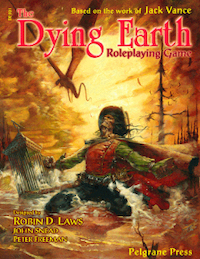
The Dying Earth Roleplaying Game is a tabletop role-playing game published by Pelgrane Press in 2001.
This is a complete list of works by American science fiction and fantasy author Jack Vance.

Kesrick: An Adult Fantasy is a fantasy novel by American writer Lin Carter, the first in his series about the fictional "Flat Earth" of Terra Magica. It was first published in paperback by DAW Books in November 1982. A trade paperback edition was published by Wildside Press in February 2001, with an ebook edition following from Gateway/Orion in March 2020. It has also been translated into Italian.
Appendix N is a list of books and authors which informed the creation of Dungeons and Dragons. The term now covers a loose literary aesthetic of pulp fantasy and planetary romance.
